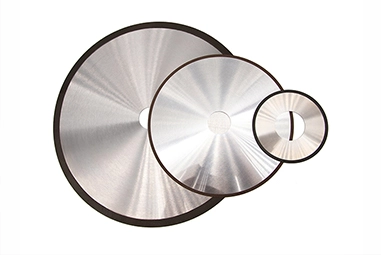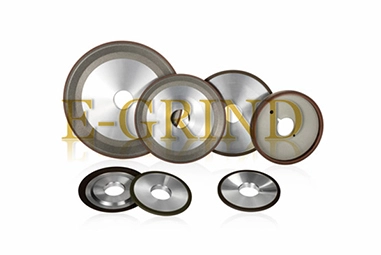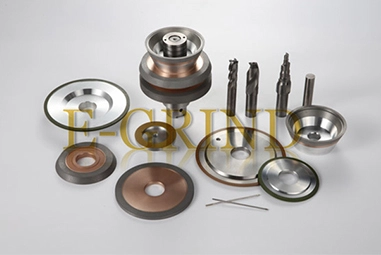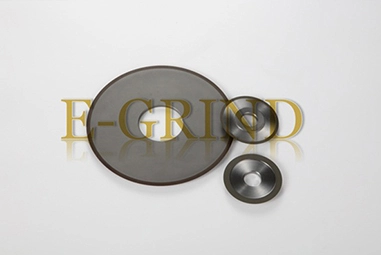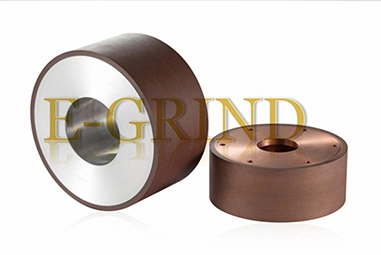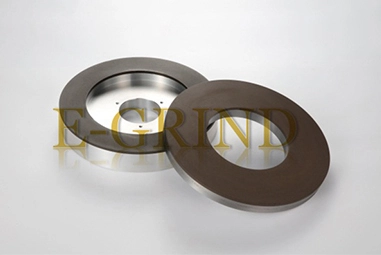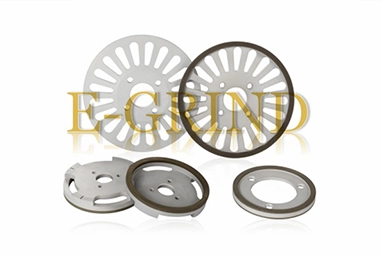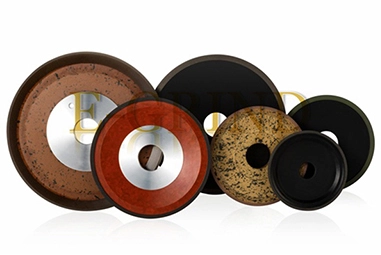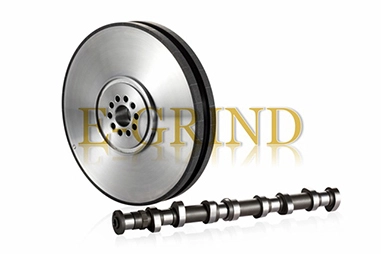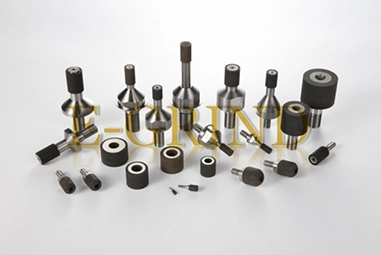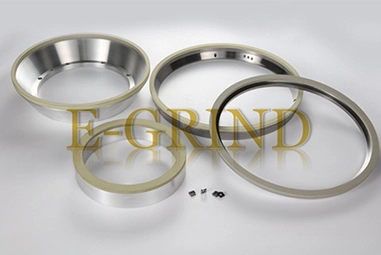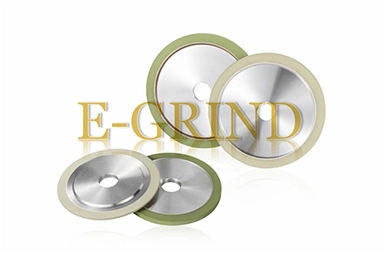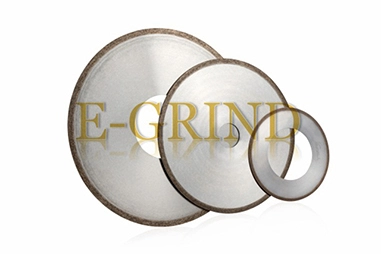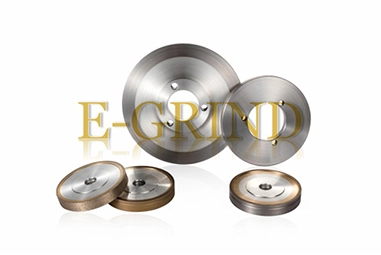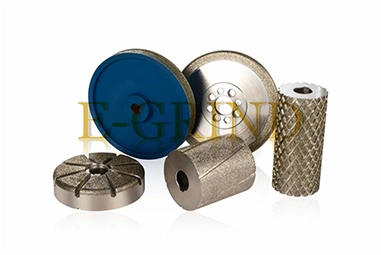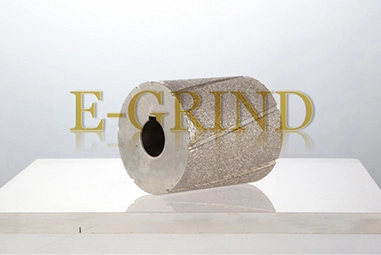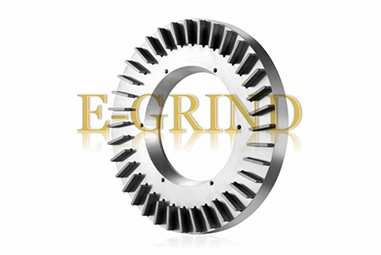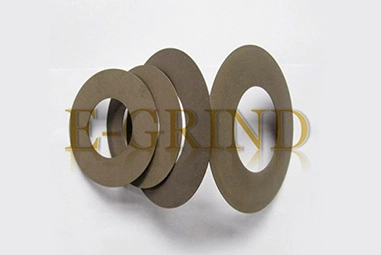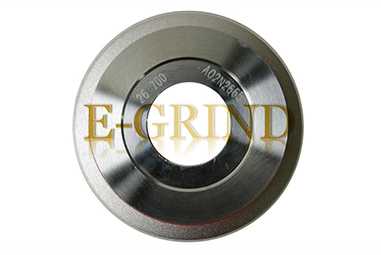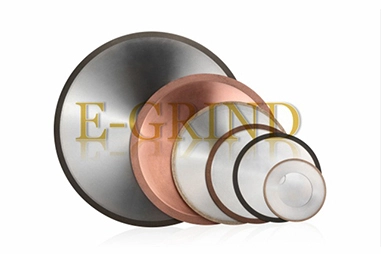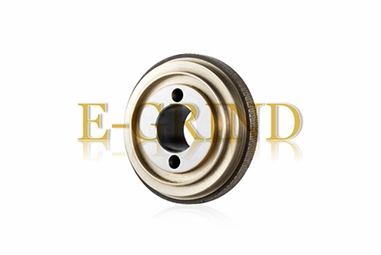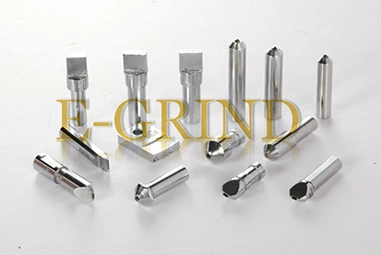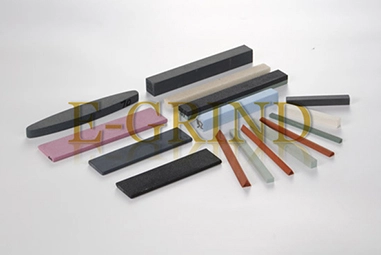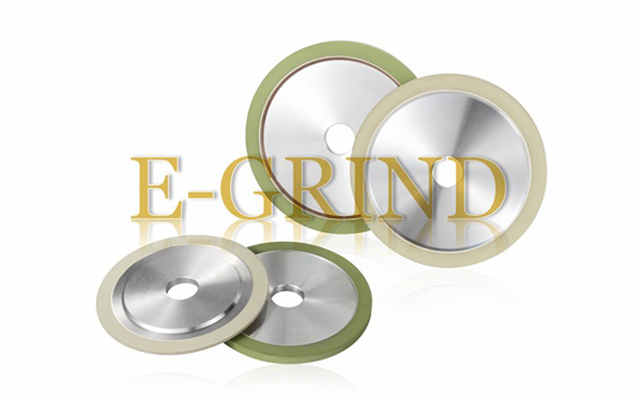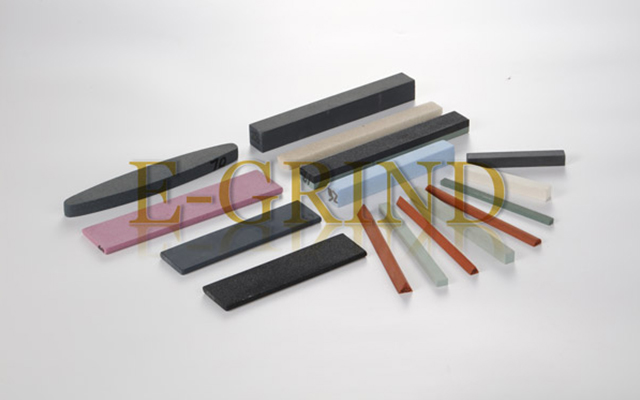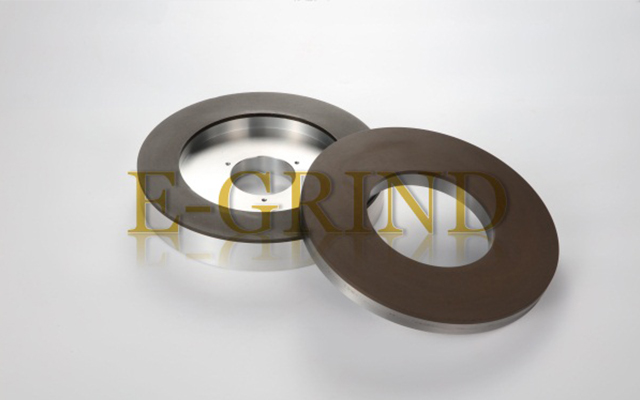Resin bond grinding wheel is the type of grinding wheels that use resin as a bond, one of the three elements that make up a grinding wheel. In the case of resin bond grinding wheels, it only represents the bond, so it is necessary to see the specifications in detail to see what purpose and function the grinding wheel has. Also called a resinoid grinding wheel.
A grinding wheel is simply a product that consists of the following three elements.

Abrasive
The grinding wheel contains countless abrasive grains and has the role of removing material from the workpiece to be processed. Abrasive grains can be broadly classified into conventional abrasive grains and super abrasive grains. As conventional abrasive grains, hard ceramic materials such as alumina and silicon carbide are often used, and as super abrasive grains, materials that are even harder than conventional abrasive grains such as diamond and CBN are used. As one of the most professional CBN grinding wheel manufacturers, E-grind has more than 50 years of experience in the super-abrasive industry. We offer different types of diamond grinding wheels and CBN grinding wheels for sale. Contact us and get super abrasive grinding wheels.
Bond
The bond has the role of keeping the abrasive grains in the shape of the grinding wheel, that is, binding them together. Most of the parts that make up the grinding wheel are bond material. Generally, the color of the grinding wheel is the color of this bond. Depending on the component, metal (metal-based bond), resin or Resin bond (resin-based bond), vit or vitrified (ceramic-based bond), rubber, shellac, magnesia, etc. are known.
Pore
Pores are not essential for grinding wheels, so there are actually two-component grinding wheels that consist only of abrasive grains and bond. However, in many cases, these pores are intentionally created during manufacturing, and there is also the idea that they play a very important role. The fact that there are many pores means that the inside of the grinding wheel is porous, and pores play two main roles.
During polishing, it prevents the "clogging phenomenon" in which chips adhere to the grindstone and cannot be removed.
Prevents temperature rise during polishing.
A rise in temperature can burn the surface of the grinding wheel or workpiece, or distort the shape. Also, diamond is not very resistant to heat, so it is desirable to keep the temperature as low as possible. However, when clogging occurs, the temperature rises at once. It is said that about 70% or more of the heat during grinding is transferred from the grinding wheel to the workpiece to be processed. Therefore, the matter of how to suppress the heat of the grinding wheel is a very important factor in considering grinding efficiency.
Resin bond diamond grinding wheels include those used for cutting, those used for grinding, and those used for polishing. The one used for cutting is called a cutting wheel. Abrasive layer (a layer of grinding wheel containing abrasive grains, the net part of the grinding wheel).
Compared to other bonds, it has better flexibility, so it has the feature that the abrasive grains do not cut deeply when hitting the workpiece. In addition, the resin bond grinding wheel has excellent self-sharpness, with the same grit size, it can obtain a better surface finish to the workpiece.


